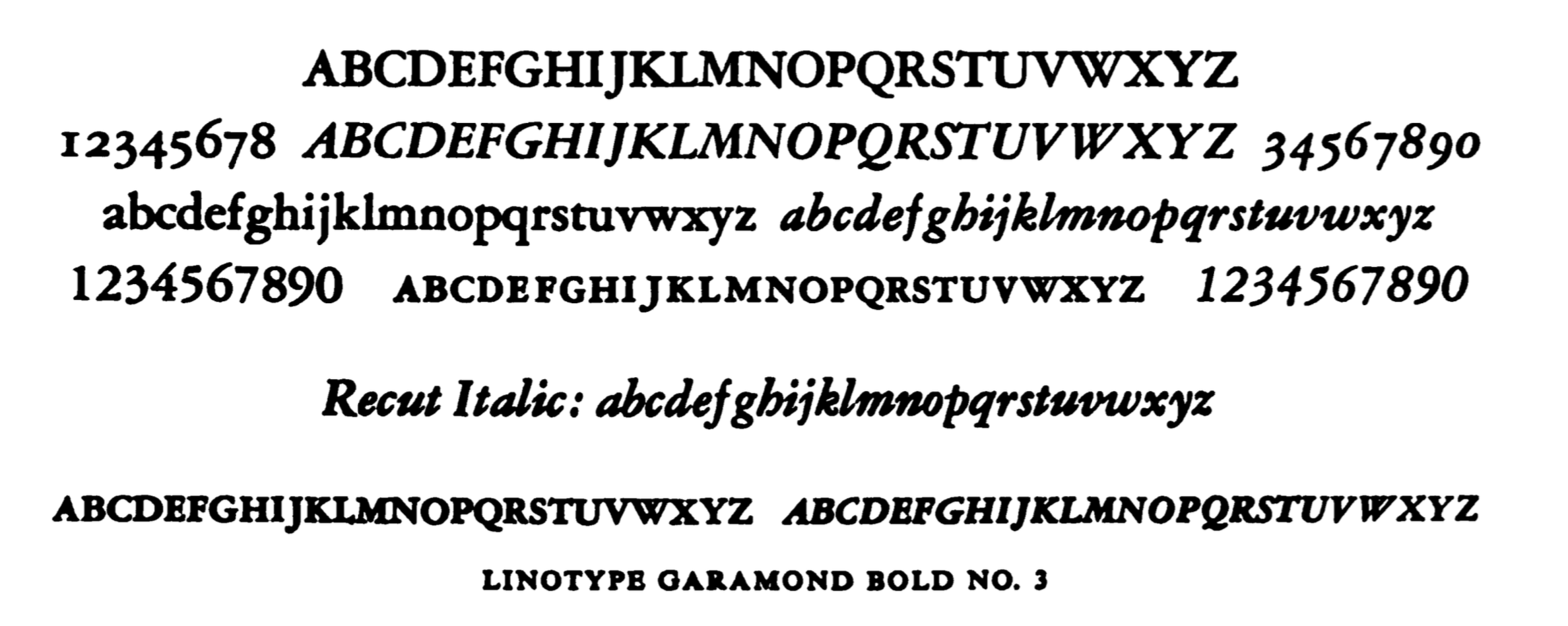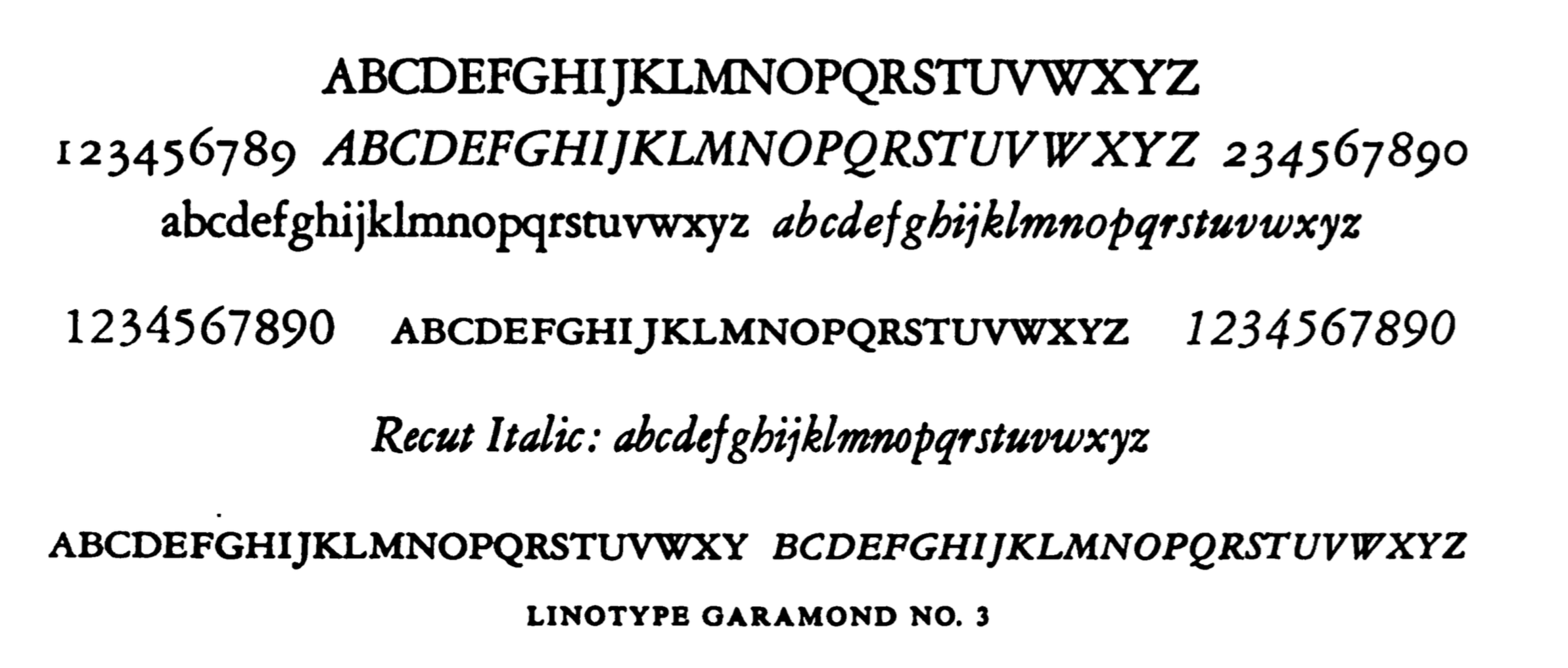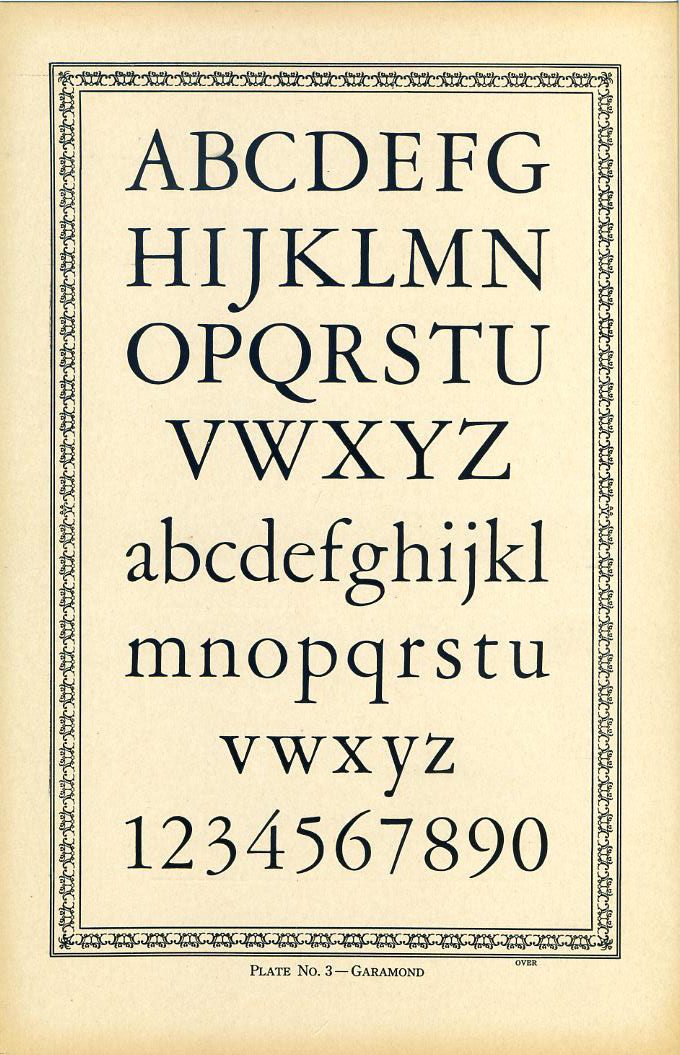TYPE DESIGN INFORMATION PAGE last updated on Sat Jun 22 22:07:32 EDT 2024
FONT RECOGNITION VIA FONT MOOSE
|
|
|
|
Mac McGrew on Garamond
This text is from Mac McGrew's American Metal Typefaces of the Twentieth Century: Claude Garamond was a distinguished sixteenth-century type designer and founder, the first person to establish typefounding as a business separate from printing. Fonts known as caracteres de l'Universite and ascribed to Garamond are preserved in the Imprimerie Nationale in Paris. These were the inspiration for the Garamond typeface designed by Morris Benton for ATF and Garamont designed by Frederic W. Goudy for Monotype. Several years after they were released, Beatrice Warde, writing under the pseudonym of Paul Beaujon, established that the source types were actually the work of Jean Jannon, a master printer in Paris in the early seventeenth century. But this disclosure did nothing to diminish the popularity of the elegant types named for Garamond. Benton started work on his design in 1917, and it was released two years later, with Italic. Garamond Bold was added in 1920 and Bold Italic in 1923; they have achieved great popularity and wide use, and for many years were a basic choice for advertising display. In 1922 Thomas M. Cleland designed a set of swash letters and other auxiliary characters for the Garamond series. He also redesigned several characters in the fonts. In the specimen here, redesigned characters are shown in the alphabets, while EFJLU, shown separately, are Benton's original designs. Garamond Bold had similar characters. About 1930 Garamond Italic and Bold Italic were modified slightly for casting on angle body, and for a time were offered both ways. The separate J and fin the Italic specimen show the most obvious modifications for angle body, which had no ligatures, swash, or other extra characters. Garamond Open was designed by Benton for ATF in 1931. Aside from a short J and non-kerning f, it follows the revised style of Garamond. Intertype introduced a copy of Garamond in 1926, shown first under the name Garatonian; a short time later the Garamond name was applied and has remained. Edward E. Bartlett of Linotype went back to original Garamond specimens for a different and more authentic version of the face, introduced in 1929 with bold and italics; although these were handsome typefaces they never achieved the popularity of the ATF design. Later Linotype adapted the Benton design as its Garamond No.3 series. ("Garamond No.2" is said to have been applied to a few fonts of German Linotype Garamond brought to the United States.) Monotype issued Goudy's Garamont in 1921, although Monotype had an agreement that permitted reproduction of ATF typefaces. No boldface was designed for Garamont, so Mono copied ATF's Garamond Bold and Italic, which were mechanically incompatible with Goudy's design for keyboard typesetting. But popularity of the Benton design was such that Monotype copied it in 1938 under the name American Garamond, in composition sizes. This left Garamond and Garamond Italic almost the only important later ATF typefaces not copied by Monotype in display sizes. One of the most delicate and distinctive versions of Garamond, with bold and italics, was designed by R. Hunter Middleton for Ludlow in 1929, based on authentic original sources. It also has a number of swash and terminal characters. In the specimens here, both light and bold italic swash letters are out of sequence---in each case, the letter preceding G is J, not F. Also see Garamont; Granjon. |
EXTERNAL LINKS |
| | |

file name: Linotype Garamond Bold No3 1936

file name: Linotype Garamond No3 1936

file name: Monotype Garamond No3 1925
| | |
|
Luc Devroye ⦿ School of Computer Science ⦿ McGill University Montreal, Canada H3A 2K6 ⦿ lucdevroye@gmail.com ⦿ http://luc.devroye.org ⦿ http://luc.devroye.org/fonts.html |
